Who are the German-Americans ?
German Americans are individuals in the United States with ancestral roots in Germany. Their cultural contributions are extensive and diverse, encompassing traditions, festivals, language preservation, and culinary influences. German Americans have a significant presence in the U.S., dating back to the 17th century.
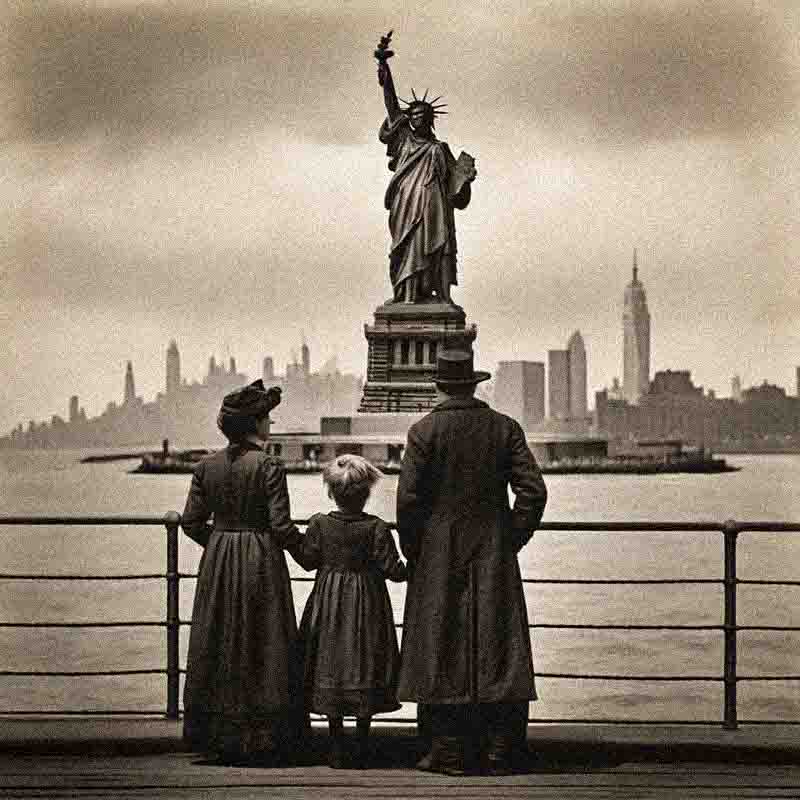
German Americans have played a vital part in shaping various aspects of American society, from cultural traditions to economic developments.
Today, German Americans are a diverse group of people. They live in all parts of the United States and come from all walks of life.
However, they share a common bond: their German american heritage and the continuation of German culture in the United States.
German-Americans are citizens of the United States who were either born in Germany or are of German descent. Today, 49 million descendants of German immigrants make up 16 per cent of the total U.S. population. German-Americans are the second largest ancestry group, ahead of Irish-Americans, African-Americans, and English-Americans.
12 Facts To Know About German Americans
-
Early Immigration: German immigration to America began in the 17th century, with significant waves occurring in the 19th and early 20th centuries due to economic hardship, political unrest, and religious persecution in German-speaking regions.
-
Population: German Americans constitute one of the largest ancestry groups in the United States, with around 45 million people claiming German heritage according to recent census data.
-
Language: German was once a widely spoken language in the U.S., with numerous German-language newspapers, schools, and churches. Although its use has declined, there are ongoing efforts to preserve it through cultural organizations and language programs.
-
Cuisine: German Americans have significantly influenced American cuisine, introducing foods such as sausages (e.g., bratwurst), pretzels, sauerkraut, schnitzel, and various pastries.
-
Brewing Industry: German immigrants played a key role in developing the American brewing industry. Many of the country’s largest breweries, such as Anheuser-Busch and Miller, were founded by German Americans.
-
Traditions: Many popular American traditions, such as the Christmas tree (Tannenbaum), Oktoberfest, Easter Celebrations, and the Kindergarten have German origins.
-
Political Influence: German Americans have had a notable impact on American politics. Carl Schurz, a German immigrant, became a prominent political figure, serving as a U.S. Senator and Secretary of the Interior in the late 19th century.
-
Cultural Organizations: Numerous cultural organizations, such as the German American Heritage Foundation of the USA, work to preserve and promote German American history, culture, and heritage.
-
Economic Contributions: German Americans have been influential in various sectors of the American economy, including agriculture, manufacturing, and commerce. They brought with them skills and traditions that helped shape the country's industrial and agricultural landscapes.
-
Education and Science: Many German American immigrants and their descendants have made significant contributions to education and science in the U.S., including influential figures like Albert Einstein.
-
Impact of World Wars: During both World Wars, German Americans faced suspicion and discrimination. Despite this, they remained an integral part of American society and contributed to the war efforts, with many serving in the U.S. military.
-
Assimilation: Balancing the preservation of cultural traditions with integration into American society has been an ongoing challenge. Many German Americans have successfully integrated while maintaining cultural practices.
These facts highlight the diverse and profound impact that German Americans have had on the cultural, social, and economic fabric of the United States.
German Americans: Timeline
The first significant wave of German immigrants arrived in 1683, settling primarily in Pennsylvania.
Over the next few centuries, waves of Germans came to America, influenced by economic hardship, political unrest, and the promise of opportunity.
Today, German Americans are recognized for their diverse contributions to American life, from business and politics to arts and cuisine.
| Time Period | Key Events |
|---|---|
| 1683 | The first large group of German immigrants arrived in Pennsylvania aboard the ship Concord. |
| 1709 | A significant wave of German immigrants, known as Palatines, arrived in New York and Pennsylvania. |
| 1817-1820 | Formation of societies to promote and facilitate German emigration to America, such as the German Society of Pennsylvania. |
| 1848-1850 | Political upheavals in Germany led many political refugees and intellectuals to immigrate to the U.S. |
| 1861-1865 | German Americans played significant roles in the Union Army and in abolitionist movements. |
| 1871 | The unification of Germany increased migration to the U.S., as economic and political conditions changed. |
| 1880s | The peak period of German immigration to the U.S., with many settling in urban areas and forming communities. |
| 1917 | Anti-German sentiment during WWI led to discrimination and the forced renaming of German-sounding towns and streets. |
| 1920s | Many German-American breweries faced challenges due to Prohibition, leading to the closure of numerous establishments.. |
| 1930s | The rise of the Nazi regime in Germany increased the migration of German Jews and anti-Nazi Germans to the U.S. |
| 1940s | German Americans faced internment and surveillance during WWII due to fears of espionage. |
| 1965 | The Immigration and Nationality Act ended restrictive quotas, leading to increased immigration from Germany and other countries. |
| 1980s | Renewed interest in German-American heritage with festivals, organizations, and cultural events gaining prominence. |
| 1990s | German-American achievements and contributions were increasingly recognized and celebrated in mainstream media. |
| 2000s | The exploration and celebration of German-American identity continue to grow with cultural and community events. |
| 2010s | Continued integration into American culture while maintaining distinct cultural practices and traditions. |
| 2020s | Ongoing contributions to American culture, arts, science, and politics, with a focus on preserving and celebrating heritage. |
This timeline captures key moments in the history of German Americans, from early immigration waves to contemporary contributions and cultural celebrations.
German American History

Understanding and celebrating the contributions of German Americans not only honors their legacy but also highlights the diverse fabric of American society.
The evolution of German-Americans is a lengthy story - one of early beginnings, continued growth, and a steady expansion of influence.
Germans were among the first Europeans to make their homes in the New World, and are among the United States' most recent arrivals.
In search of land and religious freedom in the 1700s, they settled primarily in Pennsylvania and New York.
In the years in between, they moved into nearly every corner of the U.S., tried their hand at nearly every trade and pursuit, and helped shape the fundamental institutions of American life.
The participation of German immigrants was instrumental in winning the American War of Independence.
When did the first Germans arrive in America ?
The first German-American, Dr. Johannes Fleischer, was also the first Physician to arrive in the New World with the very first group of settlers to land on Jamestown Island in May 1607.
Other Germans arrived in 1608 on the ship “Mary and Margaret” and settled in Jamestown as glassmakers and carpenters.
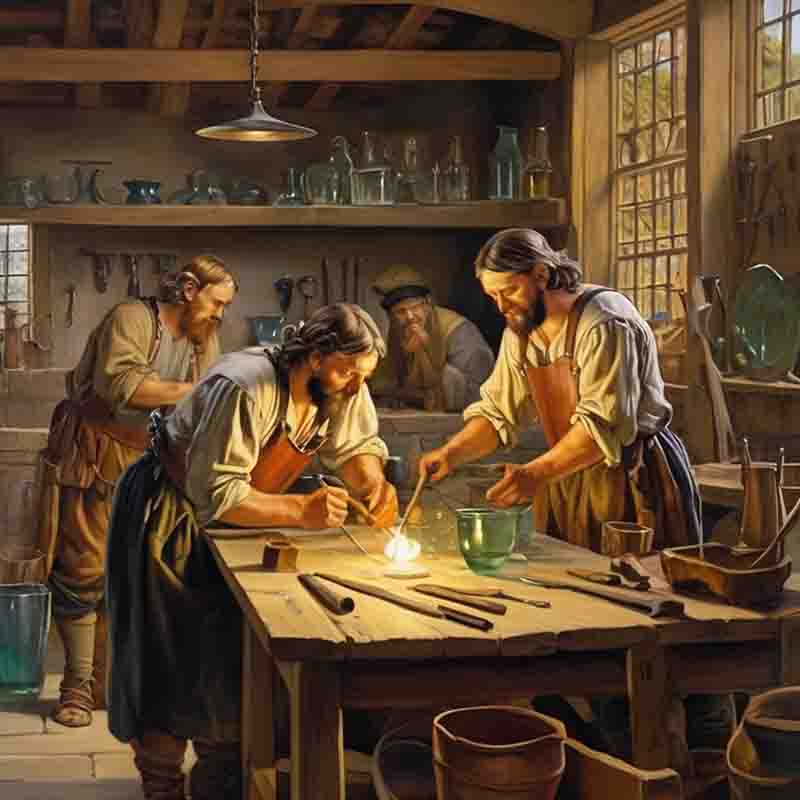
In 1620, German mineral specialists and sawyers from Hamburg arrived to work and settle in the Virginia colony. They opened the first sawmill in America.
Concord: The German Mayflower
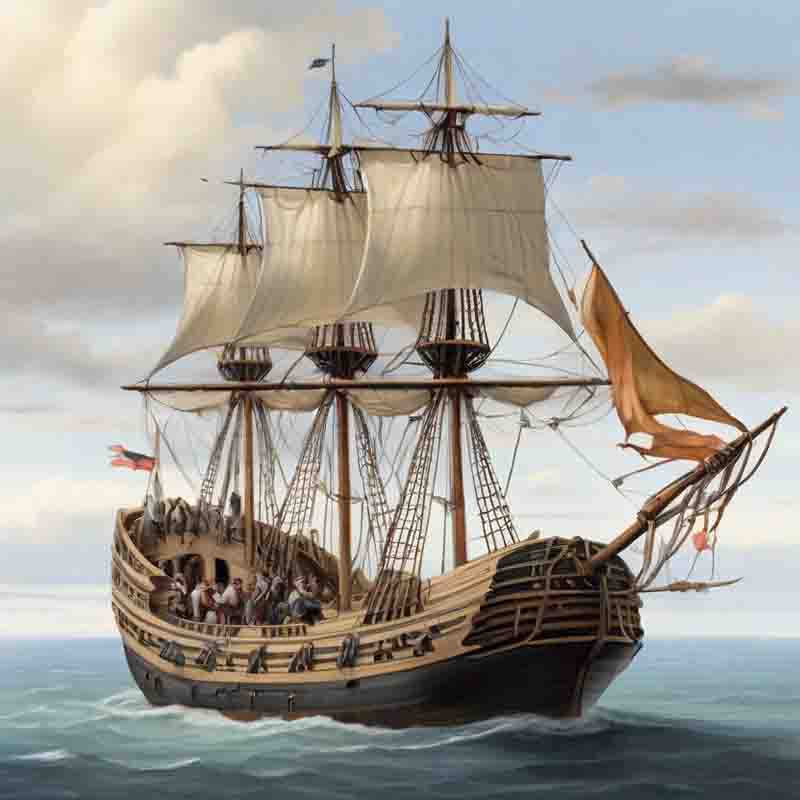
In 1683, the ship Concord carried the hopes and dreams of the first German emigrants to America.
This galleon, also known as the "German Mayflower," transported 13 Mennonite families from Krefeld, Germany, across the Atlantic to Philadelphia.
In July 1683, a ship by the name of Concord sailed from London to America.
Aboard were 33 members of 13 German families from the Lower Rhine in search of religious freedom, including some Mennonites and Quakers.
Landing in Pennsylvania in October, the Concord was greeted by William Penn personally.
Why did german immigrants come to America ?
By the 17th century, Germany suffered from the aftermath of the bloody religious conflicts of the Thirty Years' War, Christian minorities were persecuted.
Many farmers live in poverty. Crop failures and land shortages threatened their very existence.
People set out for a country that seemed to offer both freedom and prosperity: America.
The permanent wars in Europe and the French Revolution's legacy drove Germans immigrants to the New World in great numbers.
The Quaker Free State, founded by William Penn, was the destination of most Germans who sought to make their fortunes in the New World as religious refugees.
By the end of the century, the population of Germans living in Penn's colony had grown from about 20,000 in 1727 to 200,000.
How were the German immigrants received ?
To notify the citizens that a boat carrying immigrants was landing in the port the city's bells rang.
Locals gathered at the vessel to greet the arriving passengers and to find the workers they needed.
Most Philadelphians had endured the journey across the ocean and knew what the newcomers urgently needed.
And they eagerly awaited news from the old homeland.
Symbol of Freedom: The Iconic Liberty Bell
The Provincial Assembly of Pennsylvania has had a bell in its possession for official purposes since the founding of the province. The province's first bell is said to have been brought to Pennsylvania by William Penn. The renaming of the Liberty Bell occurred in the 1830s when it began to be seen as a symbol of the abolitionist movement. To them, it represented the end of slavery, which Northerners overwhelmingly celebrated.
The English speaking Pennsylvania Provincial Council became troubled by the large number of new arrivals.
Benjamin Franklin expressed his views on German immigrants in strong terms. He accused them of a refusal to become integrated.
Even those who were more willing to integrate refused to speak the language of their new homeland.
Instead, an idiom of their own emerged, Pennsylvania-Dutch or Pennsylvania-German, which blended English words and German phrases.
"Few of their children learn English. They import many books from Germany. Two (out of six publishing houses) are wholly owned by the Germans. The signs in our streets are in both languages, sometimes only in German. Soon they will outnumber us so that all the advantages we have will not be sufficient to preserve our language. It will disrupt our government as well."
The Provincial Council adopted an "Oath" in 1727, which all male Germans over the age of 16 were required to sign upon their arrival in the new world.
The pledge was an effort by the Provincial Council to assure that foreigners would abide by the laws and regulations of the English government.
Those taking the oath disassociated themselves from all affiliations with other monarchs and took allegiance to the Kingdom of England.
Oath of Allegiance
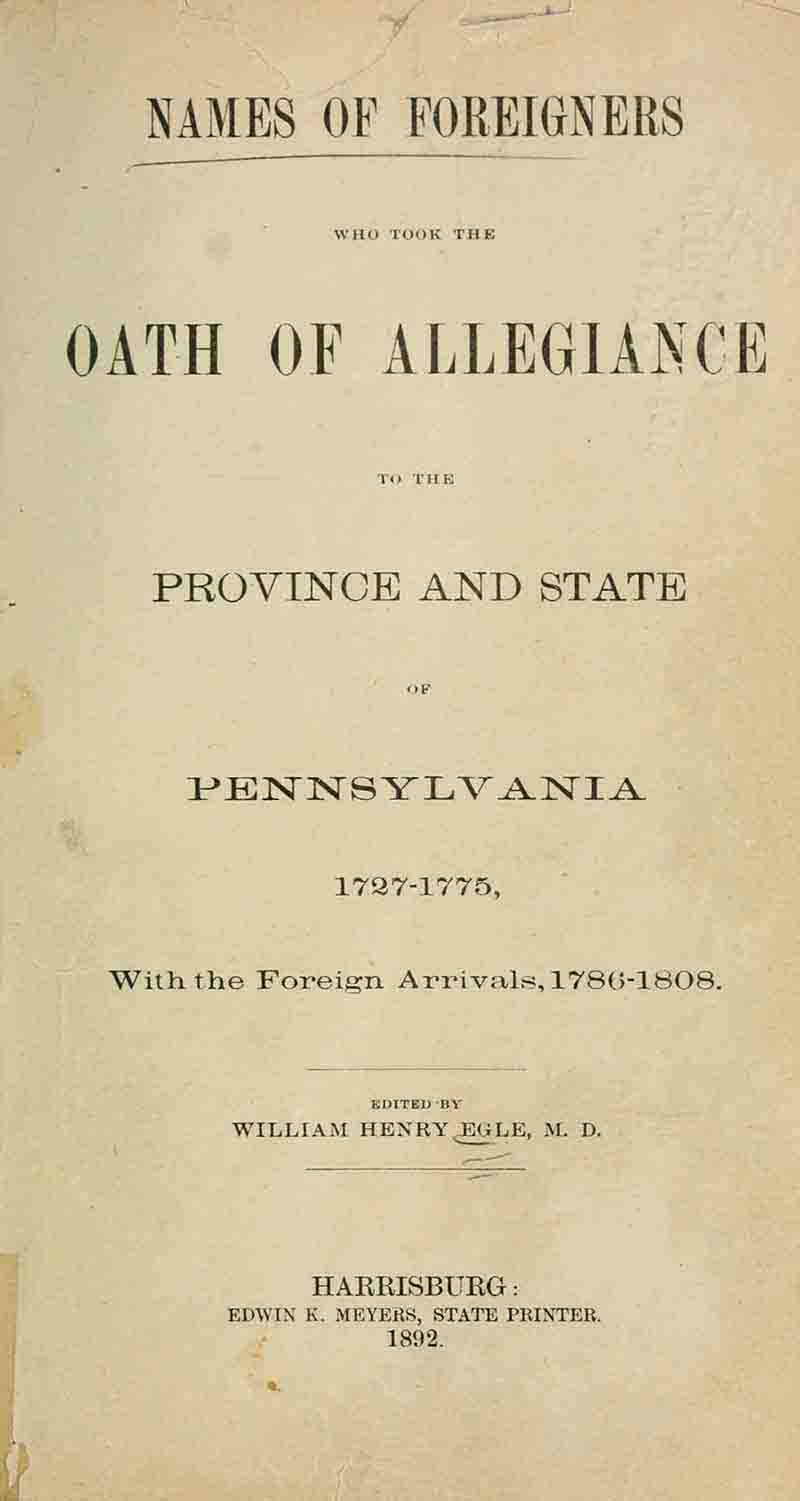
"We subscribers, natives and late inhabitants of the Palatinate upon the Rhine and places adjacent, having transported ourselves and families into this province of Pennsylvania, a colony subject to the crown of Great Britain, in hopes and expectation of finding a retreat and peaceable settlement therein, do solemnly promise and engage that we will be faithful and bear true allegiance to his present majesty, King George II, and his successors, kings of Great Britain, and will be faithful to the proprietors of this province, and that we will demean ourselves peaceably to all his said subjects and strictly observe and conform to laws of England and this province, to the utmost of our power."
Upon taking the oath, passengers were required to sign their names on two pieces of paper. If the immigrant was unable to sign his name, a registrar wrote his name for them and they placed an "X" next to their name.
How did the German immigrants adapt to America ?
Passengers who did not have enough money to pay for the journey to America were "contracted" by merchants for a specified period of time until their passage to America was settled.
Passengers who had enough money to pay their bills for the trip to America were free to travel the country.
Year by year, the German settlers pushed the frontier further west.
Their quest was for good land that had not yet been claimed. Life on the frontier had its hardships, but the hardships led to dearly held character traits.
They were economical, hardworking and self-confident.
German Immigrants had close family ties and a deep reverence for God. Neighbourly community, born out of necessity, became a profound social good.
In 1794, German immigrants presented a petition that became a legend.
They asked the House of Representatives to publish legal texts in German as well so that it would be easier for them to find their way in America.
The motion was referred to the main committee. There it was finally put to the vote. 41 members voted in favour, 42 against.
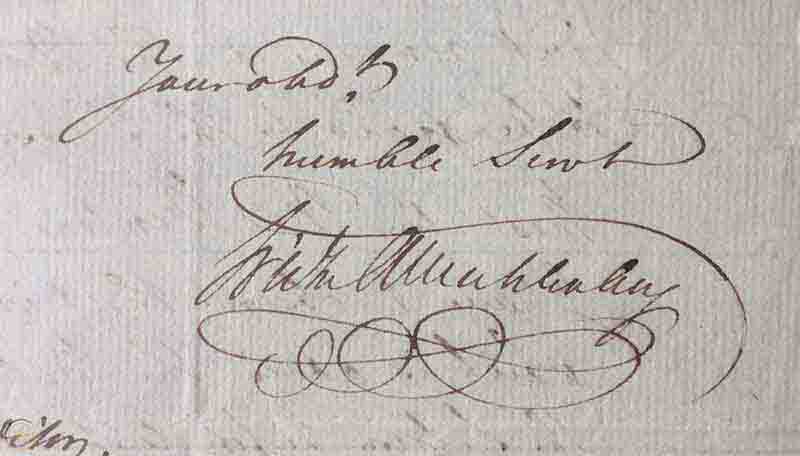
Signature of Frederick Muhlenberg (1750-1801), First Speaker of the House of Representatives.
Frederick Muhlenberg, the first Speaker of the House of Representatives, abstained from voting.
Not because, as a native of Germany, he did not want to expose himself to the suspicion of being biased, but because he thought the whole issue was inappropriate.
"The sooner Germans become Americans, the better it is. And the best way to do that is to master the English language."
German Immigration to America in the 1900s

Emigrants from Bavaria arrived in New York. Between 1892 and 1954, Ellis Island served as an immigration inspection station for millions of immigrants arriving into the United States.
Between 1820 and 1870, nearly eight million Germans immigrated to the United States.
Most settled in the northern Midwestern states - North and South Dakota, Minnesota and Wisconsin.
Germans establish themselves as a respected immigrant group. Classic "hyphenated Americans" with a dual identity.
German communities formed in rural areas where the same dialect was spoken and towns were built according to the current German architectural fashion.
In the triad of freedom, humanity, and equality, most German immigrants place the greatest value on freedom, which could often be traced back to the immigrants' own life stories.
The failure of the 1848 revolution was proof that more freedom rights were not to be expected in Germany.
Most prominent in this context were supporters of the left-liberal bourgeoisie, the so-called Forty-Eighters, who had left their homeland either by choice or under persecution to seek refuge in a land they perceived as the epitome of liberal life.
What contributions did german immigrants make to America ?
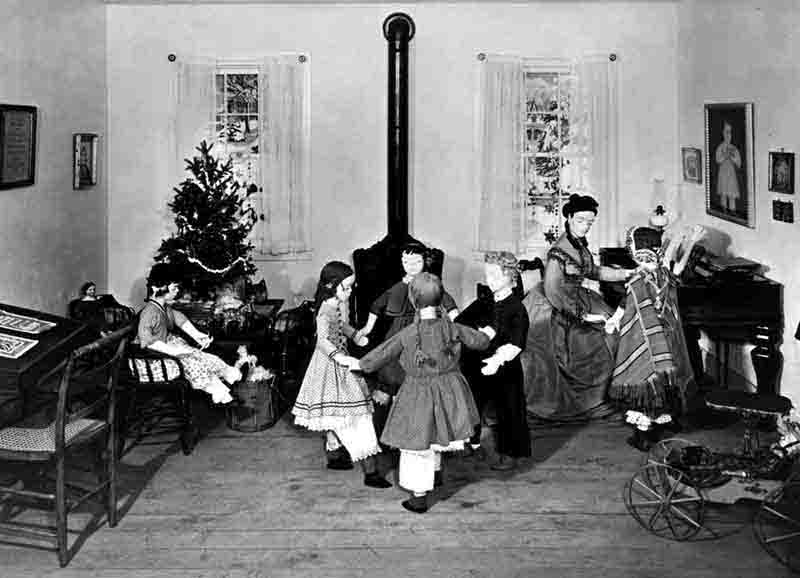
Though the concept originated in Germany, German American kindergartens played a crucial role in establishing early childhood education in the United States.
The first Kindergartens in the United States were opened by German immigrants.
They adopted the ideas of educator Friedrich Froebel, who established the world's first kindergarten in Blankenburg, Germany, in 1837.
From Gold Rush to Blue Jeans
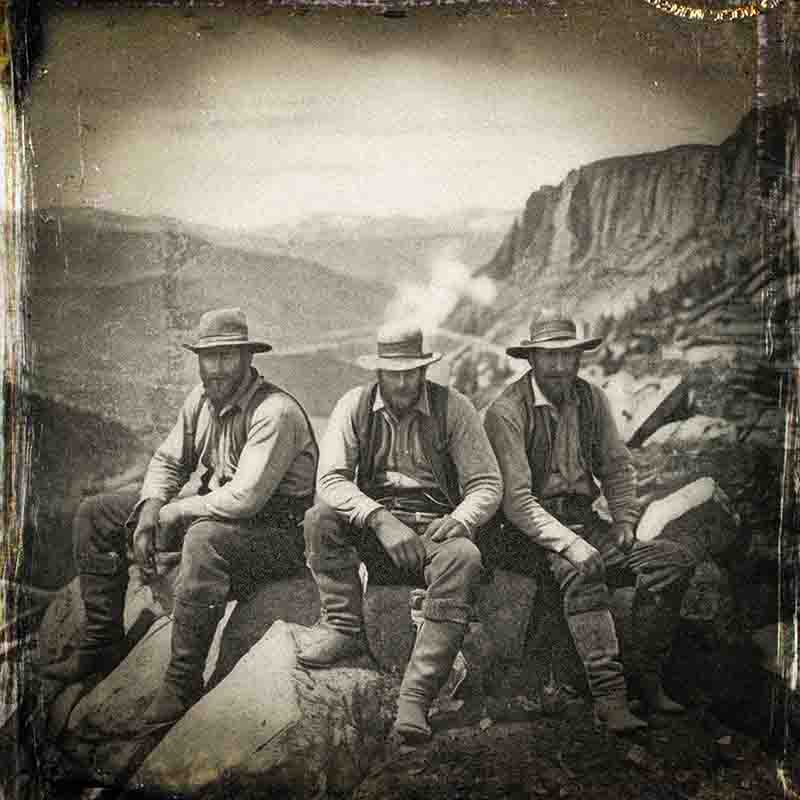
The California Gold Rush wasn't just a scramble for shiny metal, it was a boom for a Bavarian businessman named Levi Strauss.
In the frenzy of the California Gold Rush, Levi Strauss, a German immigrant, arrived in San Francisco. He started out selling dry goods, the everyday items in high demand by prospectors.
Strauss, with a stroke of innovation, used canvas originally meant for tents and wagons to create ultra-durable work pants.
This laid the foundation for Levi Strauss & Co., the company that would become synonymous with denim jeans, an iconic symbol of the American West.
How a German Cabinetmaker Shaped American Music
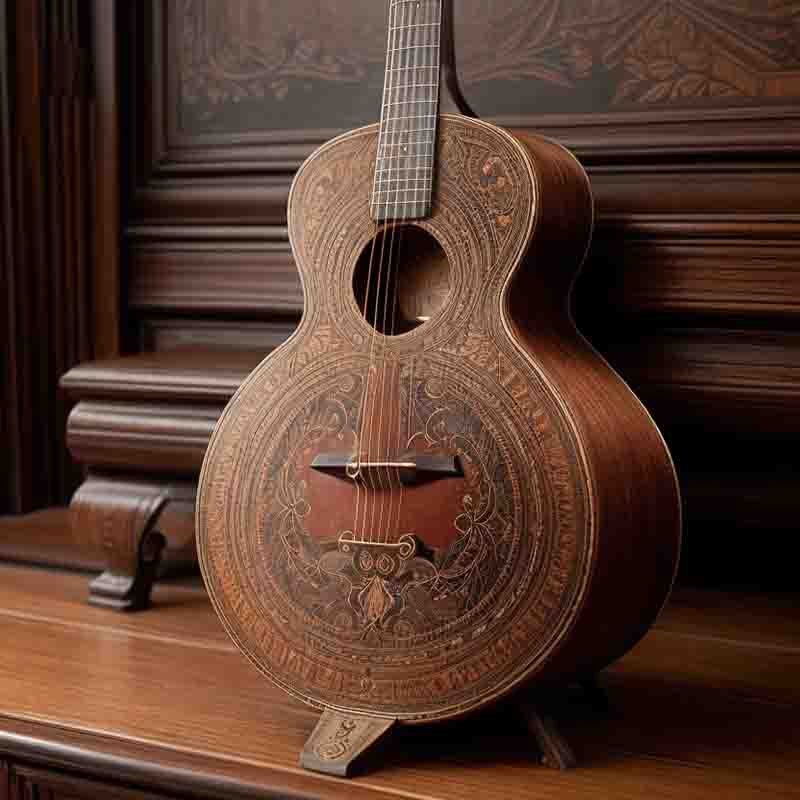
The legacy of German emigrant Christian Frederick Martin lives on through the continued success of C.F. Martin & Company, ensuring that his influence on the guitar industry will be celebrated for generations to come.
In the lavish history of guitar making, there are few names that carry as much gravitas and influence as Christian Frederick Martin.
Born in Markneukirchen, Germany, Martin's path led him to the United States, where he founded C.F. Martin & Company and changed the world of guitar making forever.
The combination of superior german-american craftsmanship, exceptional sound quality, and continuous innovation has solidified Martin guitars as icons in the music industry.
Conestoga Wagon: Symbol of Westward Expansion
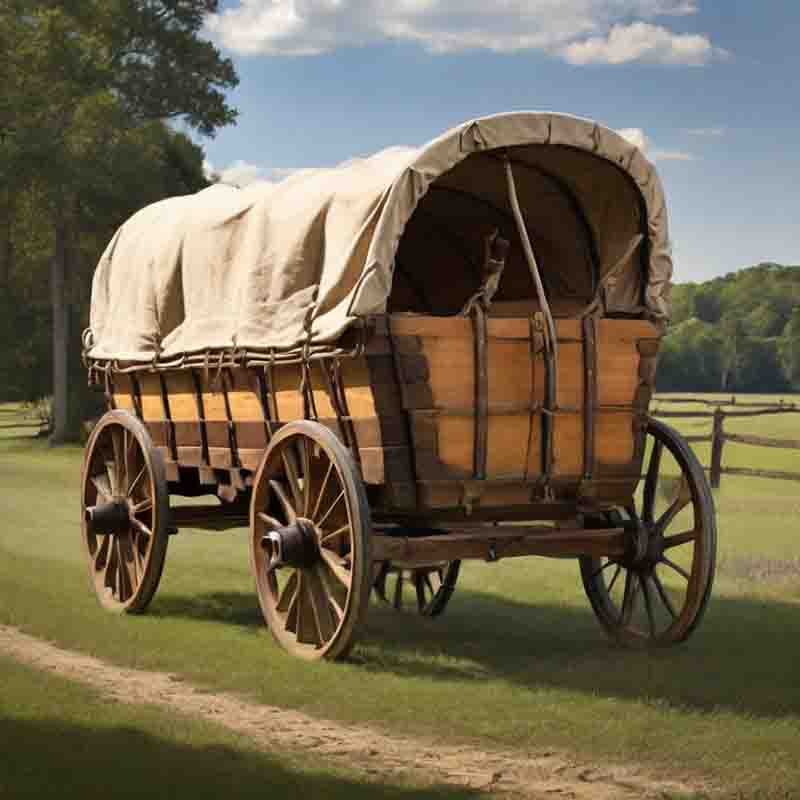
The Conestoga wagon, a horse-drawn freight wagon, originated in the 18th century in the Conestoga Creek region of Lancaster County, Pennsylvania.
The Conestoga wagon which was used in the opening of the American Frontier was first designed and built by German settlers in Pennsylvania.
Engineered by German-Americans, the vehicle played a key role in both Eastern trade and the westward expansion of the United States and became an enduring symbol of the American pioneering spirit.
Ideally suited for transporting goods over poor roads, it had a capacity of up to six tons, a floor that curved upward at both ends to prevent the contents from shifting, and a white tarp to protect it from bad weather.
Germans in the American Cilvil War
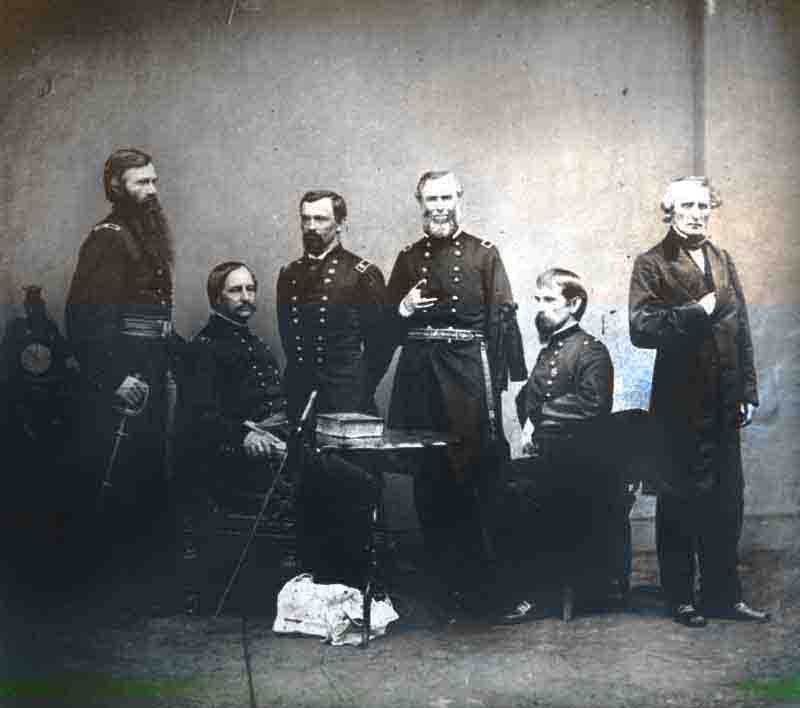
August V. Kautz (3rd from left; 1829-1895) came from a family of Baden descent, but was already born in the USA. As a cavalry general, he made a name for himself in the final pursuit of Confederate General Robert E. Lee.
Immigrants from Germany made up the largest group of foreign soldiers in the American Civil War (1861 - 1865). In the southern states, there were no more than 5000 "Dutch", 3000 of them were forcibly recruited.
They didn't want to fight for slavery. They had previously refused military service in Prussia and had fled to America from the despotism of sovereigns and religious unrest.
Approximately 216,000 American citizens of German descent served as soldiers in the Union Army during the four years of the Civil War.
German Union soldiers subsequently protected Lincoln's inauguration as president.
Masterpiece of German-American Engineering

The Brooklyn Bridge, a marvel of engineering, was designed and constructed by German engineer John A. Roebling.
Completed in 1883, the structure was the longest suspension bridge in the world at the time.
Roebling who graduated from the Royal Polytechnic Institute in Berlin had emigrated to the USA in 1831.
In 1841 he founded the first wire rope factory in America.
A Touch of Germany in America: German-American Schools, Churches & Clubs
With the onset of high industrialization in the U.S. numerous communities with schools, churches, social clubs, and Turner clubs, also known as Turnvereine (German for "gymnastic societies") emerged, where the German language, sport, and culture were nurtured.
German-Americans were among the most established population groups, both among farmers and in the new blue-collar professions.
German-initiated and managed companies operated in a variety of business sectors throughout the 19th century, including German American publishing, banking, the art of beer brewing, insurance, manufacturing, German American architecture and agricultural production.
German immigrants played a major role in enriching American cuisine by introducing new ingredients, dishes, and traditions.
Their influence is still felt today in the wide variety of German-American foods enjoyed across the country.
Early German-American literature, penned in German, explored the immigrant experience, grappling with themes of identity and a new homeland.
The linguistic influence of German did not only affect literature. Loan words such as the ubiquitous expression "zeitgeist" found their way into the language of American English.

The histories of beer halls and beer gardens are particularly associated with Munich and the southern German state of Bavaria
The early presence in the new industries also meant that Germans were more mobile than almost any other group. They were less concentrated in individual regions than other immigrants.
As foremen in jobs like railroad construction, they moved all over the country.
Although the majority of German settlers were significantly influenced in their decision-making regarding emigration by the dream of their own land, the majority of immigrants found their livelihood in the trade and service sector, in industry and commerce.
Germans are the largest immigrant group in the U.S. - and the least visible
The proportion of German immigrants was correspondingly high in the cities, of which New York was considered the second-largest German city after Berlin due to the enormously high German population.
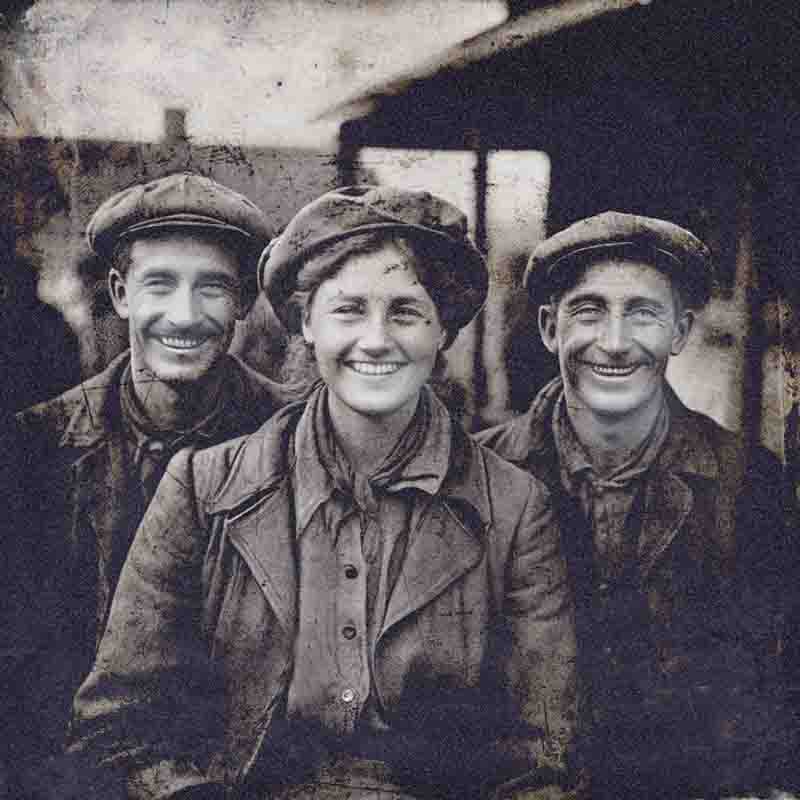
Compared to Polish and Irish immigrants, the Germans formed a distinctly diverse group whose background could only partly be traced back to the old Particularism.
Although they had shared characteristics they were a less unified group.
German Immigrants were divided not only by differences in geography but also by professional backgrounds, different denominations and different political views.
This diversity contributed greatly to the relatively effortless integration of the new arrivals.
Especially in the cities, assimilation was quicker and less complicated than in the countryside, where German settlements had long been a subculture.
In the late 19th and early 20th centuries, communities with dense German-speaking populations celebrated German-American Day on October 6 on a grand scale.
The Wartime Hysteria Targeting German Americans
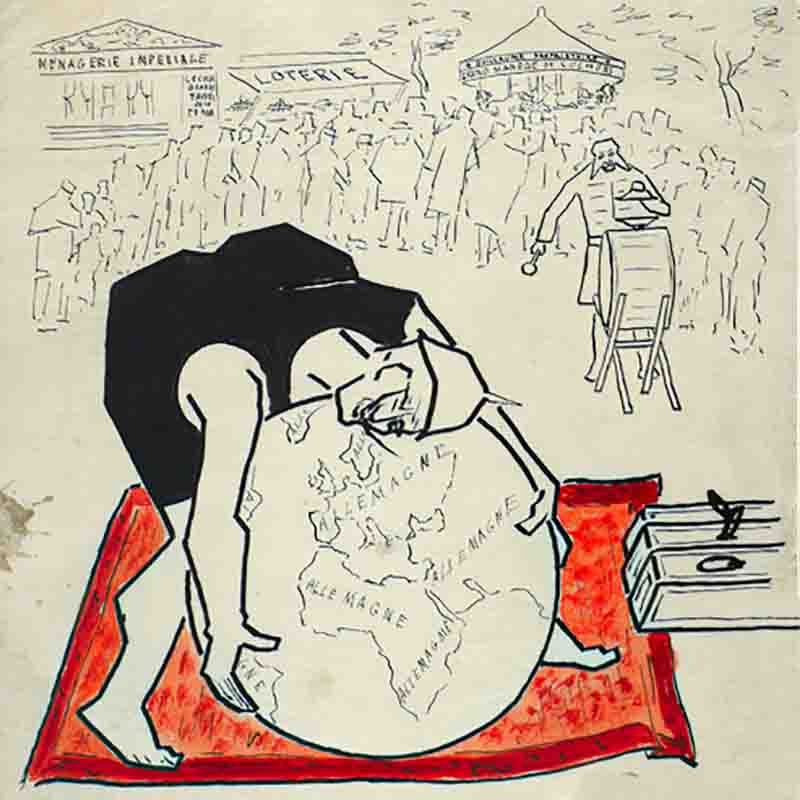
The declaration of war by the United States in 1917 dramatically shifted the perception of German Americans. Prior to this, German culture was celebrated for its contributions to American society.
In the course of the 20th century, the cultural independence of German Americans disappeared almost completely.
The reason for the dramatic meltdown was the entry of the United States into World War I.
When the war broke out in Europe in July 1914, the U.S. was initially cautious.
President Woodrow Wilson, elected in 1912, opted for neutrality, which also reflected the general mood in the country.
The Europeans, the attitude popular in the U.S. in 1914, should fight each other if they want, the Americans stay out of it.
Still, in 1916, Wilson was re-elected with the slogan "He kept us out of war!".
The image of Germans changes abruptly when the U.S. entered the First World War on April 2, 1917.
Suddenly, German Americans were under pressure to shed their ethnic identity.
The German language and culture were outlawed in the course of a veritable anti-German hysteria.
As part of this first major conflict between the United States and the German Reich, German immigrants in the United States faced assault and public ostracism.
The situation intensified by World War II. The almost complete erosion of identity of origin occurred.
No other ethnic group lost their public visibility in the course of the 20th century as the German-Americans.
Under this pressure, complete integration into American society took place.
Many German-Americans shed their German names in favour of American ones, German books were removed from public libraries, and German streets were renamed.
The American public, questioning the solidarity of German-Americans, repeatedly forced Germans to make public declarations of loyalty.
There were indeed German nationalists who publicly demonstrated their loyalty to the German homeland and shook the credibility of American Germans who felt they were American citizens.
Before World War II, many Americans thought that communism was worse than fascism.
A disturbingly large percentage of Americans, while clearly not having Nazi ideology, did harbour sympathy for it.
These perceptions changed with Germany's invasion of Poland on September 1, 1939.
Between 1933 and 1941, due to persecution by the National Socialist regime, hundreds of thousands German people, among them writers, publicists, filmmakers, directors, screenwriters, actors, cinematographers, technicians, editors, scientists, teachers, architects, artists, musicians, intellectuals and, in general, political opponents of the Third Reich left the country and emigrated to America.
German citizens of Jewish faith were deprived of their human rights and were forced to leave their German homeland.
An estimated 500,000 people were able to escape the NS terror.
“We lost our home, which means the familiarity of daily life. We lost our occupation, which means the confidence that we are of some use in this world. We lost our language, which means the naturalness of reactions, the simplicity of gestures, the unaffected expression of feelings."
A German-American leads the fight against Nazi Germany
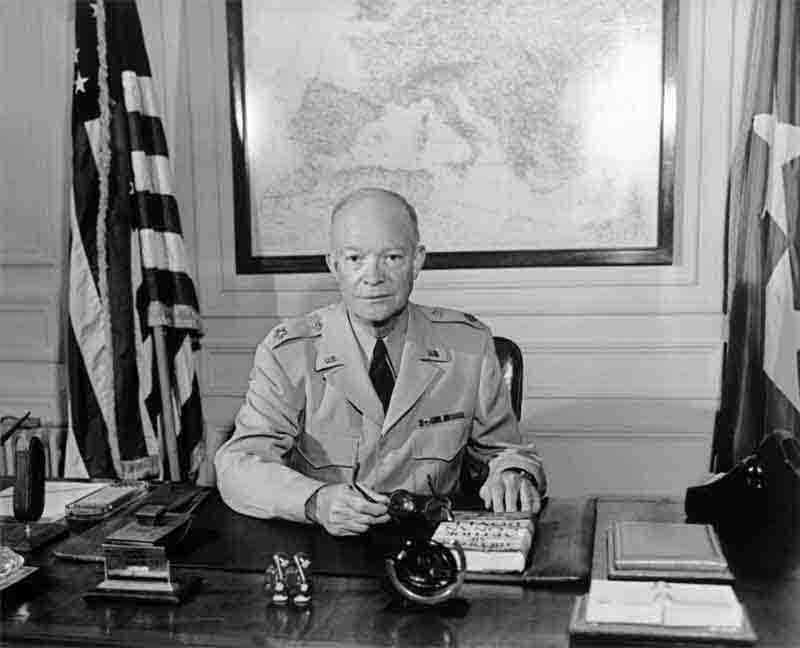
Dwight D. Eisenhower, supreme commander of Allied forces in Europe, is considered one of the most outstanding military figures in history. He was in charge of the courageous and brilliantly executed invasion of Normandy in June 1944, which led to the victory and liberation of Germany from the Nazi regime.
During World War II, anti-German-American sentiments reemerged, but they were not as intense as they had been during World War I. German Americans' loyalty was questioned less vocally.
A Pennsylvania Dutch descendant and future President of the United States, Dwight Eisenhower , commanded U.S. forces in Europe.
Two other German-Americans, Admiral Chester Nimitz of the United States Navy and General Carl Spaatz of the Army Air Corps, served at Eisenhower's side and held central roles in the fight against Nazi Germany.
World War II, industrial expansion, and Americanisation efforts intensified the cultural assimilation of many German Americans.
In the postwar period, as survivors of the conflict sought to escape its cruel consequences, there was another wave of German immigrants to the United States, including the fiancés and wives of U.S. soldiers stationed in Germany.
Between the 1950s and 1980s, almost one million Germans immigrated to the United States.
In 1983 The United States and Germany celebrated the German-American Tricentennial, marking the 300th anniversary of German immigration to Pennsylvania.
According to the 2000 U.S. Census, 46.5 million Americans claimed German ancestry, making Germans the largest nationality group in the United States.
Today, cities and states with notable German-American influence and population stretch from the Oregon coast to Pennsylvania in the so-called German Belt.
How German Americans Shaped American Traditions
German Americans are a significant ethnic group in the United States, recognized for their rich contributions to American culture, history, and society.
Their traditions, such as Oktoberfest and Christmas customs, continue to be celebrated across the country.
Notable German Americans in science, art, politics, publishing, and music have further enhanced the cultural heritage of the nation.
-
Education: German Americans have significantly influenced the American education system. Their emphasis on discipline, critical thinking, and vocational training left a lasting mark. German-inspired kindergartens, for instance, became popular early on.
-
Christmas Traditions: Many American Christmas traditions have German roots. The Christmas tree, or Tannenbaum, became popular in the U.S. thanks to German immigrants. Other customs like Advent calendars and St. Nikolaus Day are also widely celebrated.
-
Easter: German American Easter blends traditional German customs with American celebrations. The tradition of hiding colored eggs for children to find on Easter morning was introduced by German American Immigrants.
-
Oktoberfest: Oktoberfest, originally from Munich, Germany, is widely celebrated in the U.S. Cities like Milwaukee, Cincinnati, and New York host some of the largest Oktoberfest events outside of Germany.
German-American character is evident in numerous facets of American life, spanning from early immigration to present-day accomplishments.
German Americans: FAQ
From Pioneers to Innovators
Legacy of German-American Architecture
